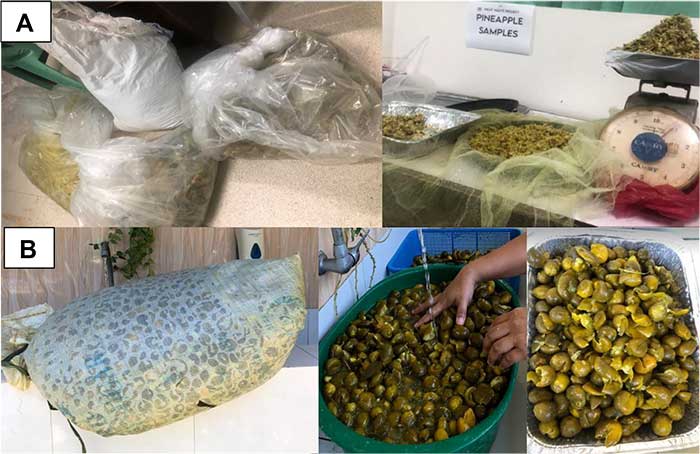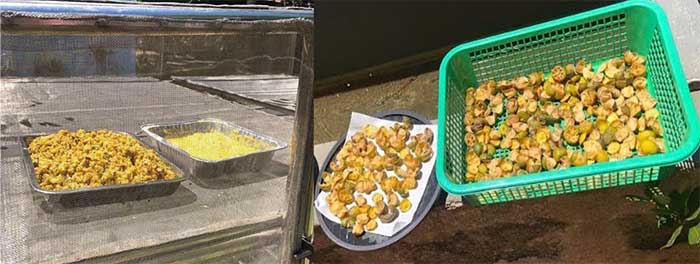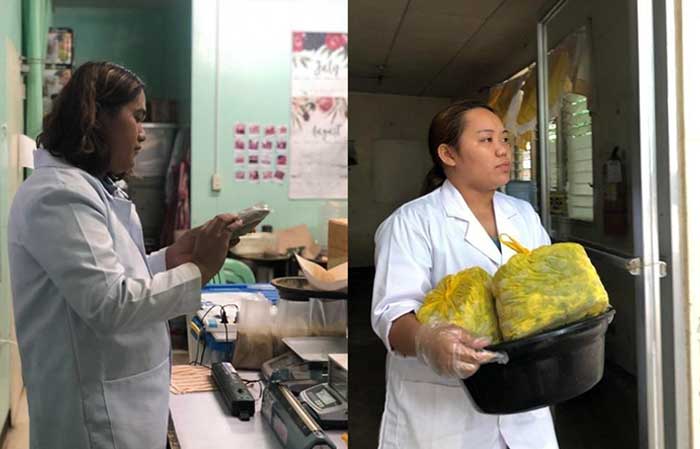As part of the country’s dedication to creating a sustainable environment and a zero-waste community, a project is exploring the use of pineapple pomace and ‘calamansi’ peels from industries as aquafeeds.
Having been home to a rich supply of tropical fruits, the country’s fruit industry has indeed been playing a large role in economic development. With the thriving fruit-processing industries, along with the continuous expansion and attempt to meet the increasing demand of the country, a large amount of organic waste from fruit processing is being generated. These wastes, if left unaddressed and unutilized, will potentially cause environmental, economic, and social problems.
Pushing sustainability forward to address these concerns, the project, “Utilization of Fruit Processing Waste as a Source of Prebiotics and Immunostimulants for the Development of Healthy and Improved Aquaculture Feeds,” is being implemented by the Mindanao State University (MSU) at Naawan.

Funded by the Philippine Council for Agriculture, Aquatic and Natural Resources Research and Development of the Department of Science and Technology (DOST-PCAARRD), the project is now in its second year of implementation.

According to the project, studies in aquaculture have proven that the utilization of fruit processing wastes from pineapple and calamansi is effective in improving health and growth of aquaculture organisms.
Pomace, peels, and core as major fruit waste products that are often discarded during processing, contain components that are good sources of dietary fiber and antioxidants. This makes them functional feed ingredients for the development of a healthy feed.
The project noted that organic wastes coming from fruit processing can be a good source of bioactive compounds and dietary fiber.

Bioactive compounds are substances that can regulate an organism’s metabolic processes or physiological activities. On the other hand, dietary fiber or the parts of pineapple and calamansi that cannot be digested such as pomace and peels can be good sources of prebiotics.
Prebiotics are beneficial to an organism’s physiology by selectively stimulating the growth of a healthy gut bacteria, promoting an efficient food digestion.
The project collected pineapple industry wastes from Del Monte Philippines Inc., while calamansi industry wastes were acquired from Charles and Charlie Food Products or K Three coolers. These wastes were washed and subjected to different drying processes such as sun drying, oven drying, and dehydration. The collected calamansi peel samples were fermented to enhance its nutritional profile and availability, while fermentation of pineapple samples is still ongoing.
With its implementation, the project continues to prepare materials and formulated diets for feeding trials. It is expected to produce a healthy aquaculture diet that will also bring sustainable income and production for both farmers and feed manufacturers through fruit waste utilization. (Rizza B. Ramoran, DOST-PCAARRD S&T Media Services)


















